

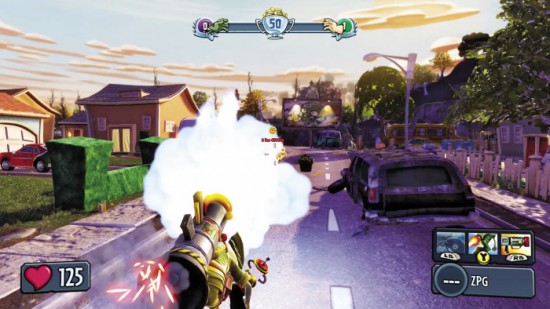
Plants vs Zombies: Garden Warfare brings a whole host of exciting and explosive attacks to Popcap’s long-lived franchise. They come in a wide variety of different flavors, ranging from the Zombie Foot Soldier’s ZPG to the Peashooter’s Chili Bean Bomb, and everything in-between. What they sometimes lack in accuracy however, they more than make up for in strength. A well placed Chili Bean Bomb can decimate a throng of Zombies around a garden. Lining up a Rocket Launcher shot can wipe out that pesky Cactus which has been shooting you for the whole game. The trick is to use them wisely.
Dealing large amounts of damage in Plants vs Zombies: Garden Warfare is almost always going to give you a fighting chance, so don’t forget the opportunity is there. Use it. Heck, even the Allstar’s Imp Punt is a worthy opponent to whatever your foes can throw at you. Line them up correctly, and you’ll be swimming in points, zombie blood/chlorophyll, and currency to unlock even more crazy character types. Drop Potato Mines behind you while running as a Cactus to whittle your opponents down to meat chunks and accurately throw the Scientist’s Sticky Exploding Balls to ensure victory.
If you’re on the receiving end of these explosive game-enders though, don’t worry. Every single one is fairly easy to spot and avoid. Potato Mines stick their little antenna out of the ground, Chili Bean Bombs make a distinctive squeal before exploding, Rockets let off plenty of smoke when they’re en-route to your face, and even the punted imps can be spotted a mile away. Keep your eyes peeled to increase your survival by a matter of seconds at least. It only takes a moment to royally screw-up the plans of your enemies in Plants vs Zombies: Garden Warfare.

Traditionally, both Plants and Zombies aren’t known to be fast movers. One is quite literally rooted to the ground, and the other shambles across the floor with the grace of a ballet dancer in concrete boots. Luckily Plants vs Zombies: Garden Warfare eschews these stereotypes by allowed each to scurry around freely. Some more so than others.
In the Plants vs Zombies: Garden Warfare Zombie camp, Engineers can hop onto Jackhammers to speed across the field of war (while avoiding the instant death of a Chomper attack) alongside Allstars who can charge forward with the aptly-named Sprint Tackle. Each of these abilities has the added bonus of dealing some damage when connecting with a Plant, but they’re primary use often is -and should be- escaping from impending doom. For those who prefer the idea of soaring through the air, Foot Soldiers can engage a Rocket Jump to reach high rooftops or avoid death. Scientists are a little strange in their movement skill as they are able to warm away from danger or into the squishy back of Plants using Warp.
For the Plants, there aren’t quite as many options, but each is no less potent than those over on Team Zombie. Peashooters can engage a skill called Hyper, which greatly boosts their acceleration and jumping prowess. Use this to leap into tall buildings before engaging a deathly duo of Chili Bean Bombs and Pea Gatling onto your unsuspecting zombified Plants vs Zombies: Garden Warfare adversaries. The only other movement modifier on Team Plant is that of the Chomper. This goliath-with-a-gob can Burrow underground to move quickly and easily around enemies. It can be used to devour Zombies whole or simply skirt under the crossfire into a better position. Beware of Engineers however, as their Sonic Grenades can pull Chompers back above ground.
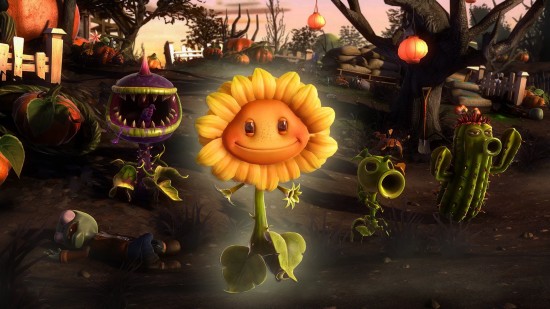
On both Team Plant and Team Zombie there is a class which can dish out heals onto friendly characters. The Plants have the ever chirpy Sunflower, while Zombies rely on their increasingly-crazy Scientists to keep everyone alive. These classes are far from simple mirrors of one-another though, so make sure to know exactly how to be of the most use to your team.
One place these two healers are similar, however, is in their boosted Revive speed. Sunflowers and Scientists are 50% quicker at reviving their allies than counterparts in Plants vs Zombies: Garden Warfare. Use this to your advantage to keep your team moving towards victory. Don’t forget to heal them too, as they won’t have full health when back from the dead/compost heap.
Scientists in Plants vs Zombies: Garden Warfare should always make sure to put down Zombie Healing Stations in any location where their team is clustered up or passing through en-masse. The healing it offers comes over time from standing close by, instead of an instant bump to the health bars. Place it on a corner where your team is entering the enemy position or in the center of a Garden being captured for optimal opportunities to keep the team alive. Team it up with the Warp and Sticky Exploding Balls to keep Plants away from the Station.
Sunflowers over on Team Plant are the undisputed royalty of healing in Plants vs Zombies: Garden Warfare. Two of their three abilities are purely focused on keeping friendly players alive (before you enter crazy upgrade territory that is). The first and most obvious is Heal Beam. Does exactly what it says on the tin too, healing whichever friendly Plant you are casting it upon. Take note here too that this Heal Beam can be used at the same time as firing with your primary ability. Team up with a Peashooter to become a death-dealing duo of flora-fury while you both pound Zombies with rounds. The second is a Heal Flower which acts much like the Scientist’s Station in Plants vs Zombies: Garden Warfare, but heals much more slowly.

In what is becoming something of an EA tradition, unlocking new classes and weapons is done almost completely through the purchase of packs. Called Sticker Packs in Plants vs Zombies: Garden Warfare, these cost a varying amount of Coins, with each offering something a little different. The trick to using them well is to be mindful not only of what character classes you have, but of how many resource cards you have available.
It is in theory completely possible to run through Plants vs Zombies: Garden Warfare only buying the more expensive packs. These higher ranked packs always contain at least one important sticker to unlock a new character. Some even guarantee you access to a completely new class. Which sticker you get is totally random though, so don’t expect to get the character class you want all of the time. It should take no more than four full-length games of Gardens and Graveyards to be able to afford these more expensive packs, depending on the performance of both yourself and your team of course.
To give yourself plenty of options during Plants vs Zombies: Garden Warfare however, you’ll have to ensure you buy some of the lower value packs from time to time. These might not hold the shiny glee that comes from unlocking a new character mind. What they do include are spawnable zombies and plants, Revive cards for the PvE-focused Garden Ops, and Skip Challenge Stars. While all of them are important, it is the Skip Challenge Stars which are the most worthwhile. They can be used to, obviously, skip any challenge which you might be finding difficult or getting that last one out of the way before leveling up your class.
Speaking of Plants vs Zombies: Garden Warfare challenges…
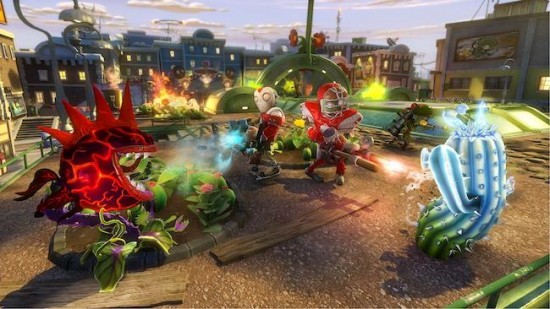
Every multiplayer shooter has to have a leveling system, and Plants vs Zombies: Garden Warfare is no different. Each class has an individual level which is grown through the completion of challenge. These can be pretty simple things like kill 10 Peashooters or slay 10 Spawned Zombies. They can, however, be a little more difficult. Standouts include devouring many zombies of a certain type as a Chomper or killing 10 Cacti using only the primary weapon on an Engineer’s Zombot Drone.
Of course, whenever you are playing a team-focused game, your primary objective should be to help your comrades forward to victory. Don’t forget about the challenges though, as you’re going to have to complete these to unlock new abilities and even new variants of each class. It’s often a good idea to go into a game on any class which has a full roster of three challenges to deal with so you have the best chance possible of steaming through some of them. When you start getting down to two or even one remaining challenge though, take heed from the last page and use a Skip Challenge Star.
That last challenge might be incredibly simple but think about this. Your last challenge as a Peashooter may be to kill 10 potted plants. So you kill 10 potted plants and level up. Yippee and well done. All of those potted plants were Doomshrooms but that doesn’t matter right? Well when your next challenges include Destroy 5 Doomshrooms, you could be waiting another 10 games before you see another one of these being placed. During Plants vs Zombies: Garden Warfare, stay efficient in your challenge lists to ensure that you’re leveling quickly and well, rather than making choices which may seem simple at first, only to become terrible mistakes in hindsight.

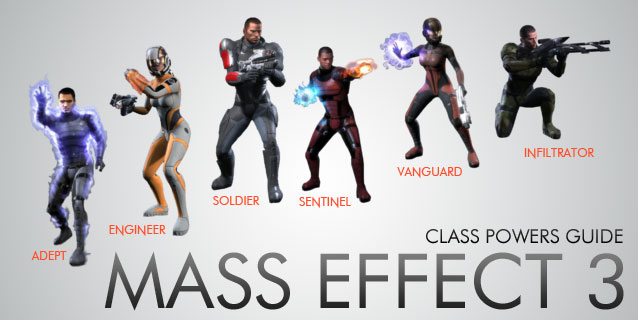


 Top 10 Best Platform Games for the Xbox One
Top 10 Best Platform Games for the Xbox One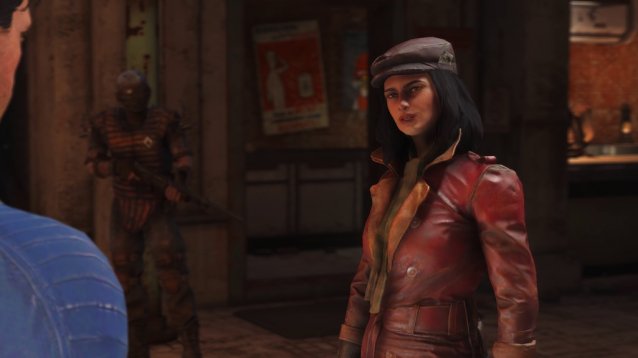 Fallout 4 Guide: How To Build Companion Relationships
Fallout 4 Guide: How To Build Companion Relationships Top iPhone Games of 2012: Gaming on the Go
Top iPhone Games of 2012: Gaming on the Go Easiest Way To Unlock Battlefield Hardline MAC-10 Machine Pistol
Easiest Way To Unlock Battlefield Hardline MAC-10 Machine Pistol Resident Evil HD Remaster PS4 Cheats
Resident Evil HD Remaster PS4 Cheats